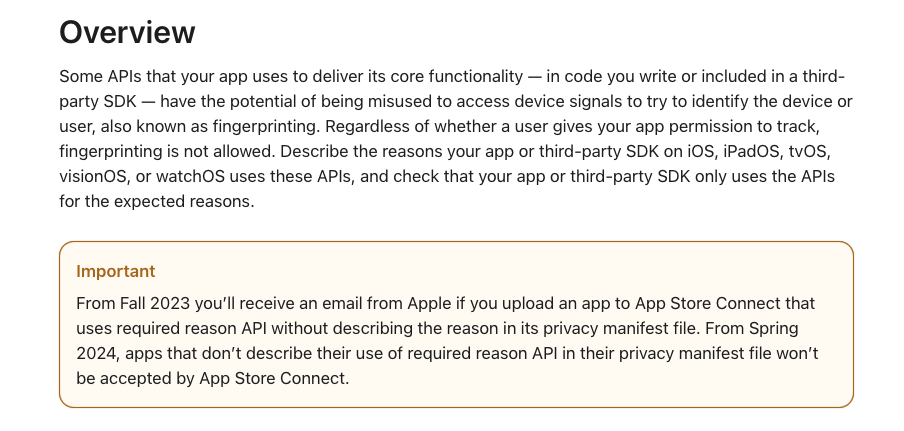Apple’s expanding ad ambitions: A closer look at its journey toward a comprehensive ad tech stack

After the hype of Apple’s ‘Wonderlust’ event last week, where it unveiled the updated models of its iPhone and Watch Series, many of the reviews centered on one word: “incremental.”
Apple hopes the latest offerings will boost stagnant device sales, a phenomenon due to several reasons such as competition from rival vendors and extending device-replacement cycles amid a growing cost-of-living crisis in its core Western markets.
Meanwhile, its services team has emerged as one of Apple’s standout divisions — in its latest earnings report, the unit had a “record quarter” when overall revenue ($81.8 billion) was down, on the back of its $21.2 billion haul — which continues to expand incrementally.
However, significant developments to this team, and to its ad tech marketplace in particular are on the horizon. Sources told Digiday, that such developments could have significant consequences for media owners and their ad tech providers, particularly with its looming ‘privacy Judgment Day’.
Here’s a rundown of what Digiday knows so far about Apple’s plans for its ads business.
Apple’s DSP plans?
Last year Digiday revealed Apple’s plans for a programmatic bidding tool, commonly known as a demand-side platform. Further details are scant — although Insider reported Vishal Gurbuxani leads this project — with Apple’s closest advertising partners unsure when it will launch despite their best efforts to find out.
All they can do is wait, knowing that it will eventually happen but not exactly when.
As one exec aptly explained, Apple needs a DSP more so than any other bit of ad tech. Without one, growing an ads business is significantly more difficult because advertisers have no way of buying ads on Apple’s properties at any meaningful scale directly from it.
“The DSP is what they need and it’s what they’re working on — very slowly,” said an ad tech exec who has discussed the matter with the company. “Similar to what Amazon did with its own bidder, Apple plans to use it to power their IP [such as App Store, Apple News, Stocks, and Apple TV] monetization. Trying to build it though? That could take them three years.”
What sources are less clear on is whether Apple’s ad tech ambitions stop there.
Apple considered its own SSP
In the past 12 months, Apple’s ads team also discussed the potential of its own supply-side platform or, at the very least, an ad exchange, according to two separate ad execs who have knowledge of those discussions. Right now, though, it’s still up in the air as the DSP remains its focus.
Nevertheless, it’s not hard to understand why Apple might be considering taking more control over the programmatic advertising process.
“It’s fair to say that Apple will build out an ad tech stack for their native inventory — it’s just not clear how yet,” said the ad exec. “They’ll continue to add all their native platforms that deliver ads. And they will be under the Apple Search Ads umbrella as it relates to buys and measurement.”
Now, why would Apple be interested in going down this path? Well, it all boils down to how much money the company wants to make from advertising. If the answer is enough to rival the biggest platforms then building a comprehensive ad tech stack is a proven way to do that.
Here’s why: SSPs are mainly used by media owners to automate the sale of their ad inventory, while ad exchanges are all about buying and selling ad space between publishers and advertisers, often in fast-paced real-time bidding environments.
Help (with ad tech experience) wanted
In the same week it unveiled the iPhone 15 devices, Apple’s ad platforms division was recruiting for 40 senior roles, hunting for engineers, product managers, and salespeople. While Apple is renowned for keeping its cards close to its chest, said job listings offer a window into its intentions as it continues to pitch its wares such as Apple TV on Madison Avenue.
Among its myriad Ads Platform jobs listings — many of which seek candidates with experience in machine learning and AI — is the search for a “product management leader” with 10+ years of ML, plus “5+ years of building advertising technology including platforms (ad exchange, or supply side platform [sic], ad networks (mobile), and search advertising.”
Meanwhile, a separate posting seeks a “senior auction and machine learning scientist” to apply advanced game theory, auction theory, and ML techniques for designing pricing/auction strategies, and ranking algorithms.”
Time will tell if Apple takes the leap. Moves like this aren’t made on a whim, as careful consideration is crucial.
Privacy police
In the meantime, Apple continues to work with ad tech vendors it trusts — or rather, those with stated policies it approves of — particularly when it comes to a cornerstone of the iPhone maker’s brand: user privacy.
Apple has a robust set of tools (otherwise known as APIs) that select ad tech companies can use to buy search ads, either directly or programmatically through the Apple Search Ads platform. It’s like having a specialized tool for buying search ads, where marketers don’t have to log in to Apple’s platform themselves. Instead, they buy the ads remotely via the ad tech vendor’s platform. From there, they have access to tools, from algorithmic optimization to keyword-blocking, that they wouldn’t necessarily have access to if they bought the ads from Apple.
These relationships are crucial for Apple as it expands its ads business, especially in rapidly growing markets like Asia. In fact, the very matter was a recurring theme in discussions with Apple at this year’s Cannes Lions Festival of Creativity. By nurturing these ad tech partnerships, Apple aims to scale quickly and effectively in key regions.
However, a key question remains: how will Apple ensure user privacy as its ad ambitions expose the iOS ecosystem to a sector of the media landscape with a chequered record when it comes to a cornerstone of its brand promise?
Earlier this year, it unveiled a tool it will use to police user privacy in the guise of Privacy Manifests (see video above), a measure that many interpreted as Apple’s attempt to (finally) stamp out illicit user-tracking, a.k.a. fingerprinting.
Judgment Day is coming for iOS developers
“We’re all wondering the level of enforcement there will be over the privacy standards of [software developer kits] SDKs,” said one exec at an ad tech vendor that provides measurement services to iOS app developers, adding that all companies in the field are anxiously waiting for word from Apple.
“The gold standard [for privacy that Apple expects such companies to adhere to] is expected soon, we’ll implement it, and then see what kind of network requests we’re allowed to make,” added the source who requested anonymity due to Apple’s potential reaction for speaking with press on the matter.
Several sources noted how the prospect of Apple blocking the network requests of ad tech vendors’ SDKs could prove ruinous to such vendors as it would nullify the value-proposition to app developers, a.k.a media owners.
In resource material made available to app developers, Apple spelled out the kind of conduct it intends to prohibit. “Some third-party SDKs rely on you to manually disable tracking when the user has not granted permission,” it reads.
“In cases when a user has not provided tracking permission, iOS 17 automatically blocks connection to tracking domains that have been specified in any privacy manifest included in your apps.”
Sources told Digiday the documentation over what measurement techniques Apple will approve of lacks the specificity that many would like, and in the interim many are monitoring their inboxes for a dreaded update from Apple.
Mike Brooks, an industry consultant with extensive experience in the mobile app ecosystem, said developers claim the available documentation for the iOS 17 update compares poorly to that of earlier rollouts, and this is adding to anxieties among many.

In the meantime, many iOS developers and ad tech vendors are anxiously awaiting an email from the App Store provider in the coming weeks, see above for Apple’s officially stated policy.
“Basically, we’re waiting on them for a list of specific SDKs that Apple finds concerning from a privacy perspective,” explained Brooks.
“In the beginning, I think, Apple is going to announce a list of privacy-impacting SDKs [and the companies that provide them], they’ll probably give some kind of grace period – say, two-to-three months – but those folks will be the first that are required to comply with privacy manifest.”
So, as Apple increasingly turns to media as part of its attempts to diversify revenue, ad tech vendors and media owners are now on notice as it yields its privacy axe in a manner that’s (arguably) more wide-sweeping than any government.
More in Media Buying

Ad Tech Briefing: Big Tech won 2025 (even when it lost)
How AI, commerce media and scale reshaped ad tech in 2025 to the benefit of Big Tech.

How brands shifted marketing and media strategies through year of tariffs
Marketers share how they navigated the maze of tariffs and regulatory changes this year.

Media Buying Briefing: Omnicom Media execs begin their pitch outreach ahead of an expected new-business glut
Omnicom’s acquisition of IPG is only a few weeks old, but its combined offer to the market will soon be put to the test as it meets with consultants.








